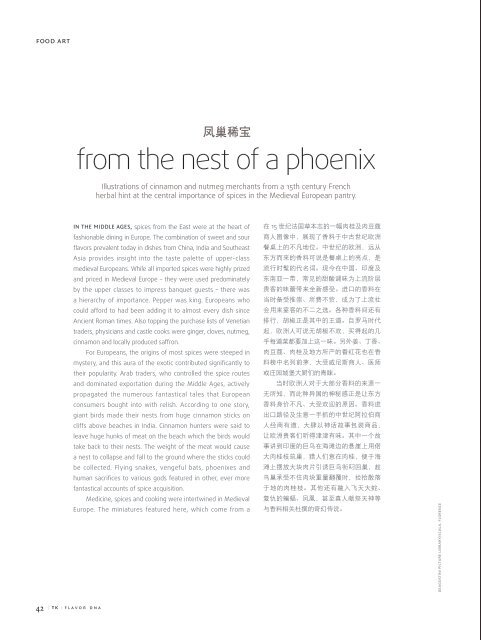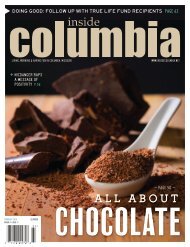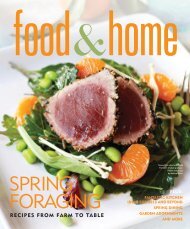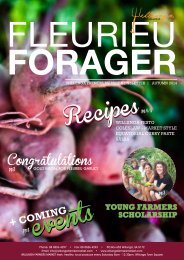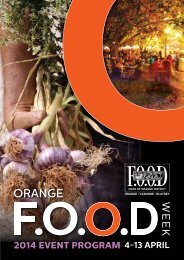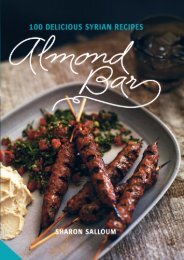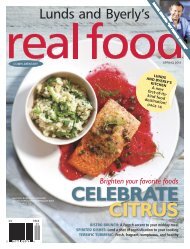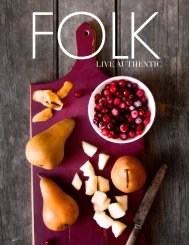Tasting Kitchen
Welcome to Tasting Kitchen. Season’s Greetings – or should I say Seasonings Greetings! This holiday TK issue is full of spices and flavorings. We talk to four talented and ambitious chefs about the flavor profile – or Flavor DNA – of dishes from India, Sichuan, Vietnam and the Isaan region of Thailand. Think cardamom, black salt and saffron, red peppercorns, red chilies and green chilies, dill, Kaffir lime, lemongrass, coriander, galangal and turmeric. We take a look at spices in history, and how even back in the Middle Ages savvy marketers knew the value of a good story. Spice merchants claimed that birds used cinnamon sticks to make giant nests in the cliffs above beaches in India, which “cinnamon hunters” then plotted to obtain. Today India is still associated with the world’s best spices. In this issue, for our first Tasting Destinations feature, TK’s Director of Photography David Hartung and Senior Writer Lucy Morgan traveled to Old Delhi to visit the world’s largest spice market and to New Delhi to visit one of the world’s top restaurants for modern Indian cuisine. One of our featured wines is the peppery Austrian Grüner Veltliner. We also talk to a New Zealand Wine Master about what makes great wine great, and to a leading French Champagne Chef de Cave about the value of patience and restraint. There are also some crabs running loose in the issue. A master chef in Macau shares his recipe for Quinoa Lobster Salad while five more from Hong Kong and Singapore share their favorite crab dishes and culinary musings. Happy Holidays,
Welcome to Tasting Kitchen.
Season’s Greetings – or should I say
Seasonings Greetings!
This holiday TK issue is full of spices and
flavorings.
We talk to four talented and ambitious
chefs about the flavor profile – or Flavor DNA
– of dishes from India, Sichuan, Vietnam and
the Isaan region of Thailand. Think cardamom,
black salt and saffron, red peppercorns, red
chilies and green chilies, dill, Kaffir lime,
lemongrass, coriander, galangal and turmeric.
We take a look at spices in history, and
how even back in the Middle Ages savvy marketers knew the value of a good story.
Spice merchants claimed that birds used cinnamon sticks to make giant nests in the
cliffs above beaches in India, which “cinnamon hunters” then plotted to obtain.
Today India is still associated with the world’s best spices. In this issue, for
our first Tasting Destinations feature, TK’s Director of Photography David Hartung
and Senior Writer Lucy Morgan traveled to Old Delhi to visit the world’s largest
spice market and to New Delhi to visit one of the world’s top restaurants for modern
Indian cuisine.
One of our featured wines is the peppery Austrian Grüner Veltliner. We also
talk to a New Zealand Wine Master about what makes great wine great, and to a
leading French Champagne Chef de Cave about the value of patience and restraint.
There are also some crabs running loose in the issue. A master chef in Macau
shares his recipe for Quinoa Lobster Salad while five more from Hong Kong and
Singapore share their favorite crab dishes and culinary musings.
Happy Holidays,
You also want an ePaper? Increase the reach of your titles
YUMPU automatically turns print PDFs into web optimized ePapers that Google loves.
food art<br />
凤 巢 稀 宝<br />
from the nest of a phoenix<br />
Illustrations of cinnamon and nutmeg merchants from a 15th century French<br />
herbal hint at the central importance of spices in the Medieval European pantry.<br />
IN THE MIDDLE AGES, spices from the East were at the heart of<br />
fashionable dining in Europe. The combination of sweet and sour<br />
flavors prevalent today in dishes from China, India and Southeast<br />
Asia provides insight into the taste palette of upper-class<br />
medieval Europeans. While all imported spices were highly prized<br />
and priced in Medieval Europe – they were used predominately<br />
by the upper classes to impress banquet guests – there was<br />
a hierarchy of importance. Pepper was king. Europeans who<br />
could afford to had been adding it to almost every dish since<br />
Ancient Roman times. Also topping the purchase lists of Venetian<br />
traders, physicians and castle cooks were ginger, cloves, nutmeg,<br />
cinnamon and locally produced saffron.<br />
For Europeans, the origins of most spices were steeped in<br />
mystery, and this aura of the exotic contributed significantly to<br />
their popularity. Arab traders, who controlled the spice routes<br />
and dominated exportation during the Middle Ages, actively<br />
propagated the numerous fantastical tales that European<br />
consumers bought into with relish. According to one story,<br />
giant birds made their nests from huge cinnamon sticks on<br />
cliffs above beaches in India. Cinnamon hunters were said to<br />
leave huge hunks of meat on the beach which the birds would<br />
take back to their nests. The weight of the meat would cause<br />
a nest to collapse and fall to the ground where the sticks could<br />
be collected. Flying snakes, vengeful bats, phoenixes and<br />
human sacrifices to various gods featured in other, ever more<br />
fantastical accounts of spice acquisition.<br />
Medicine, spices and cooking were intertwined in Medieval<br />
Europe. The miniatures featured here, which come from a<br />
在 15 世 纪 法 国 草 本 志 的 一 幅 肉 桂 及 肉 豆 蔻<br />
商 人 图 像 中 , 展 现 了 香 料 于 中 古 世 纪 欧 洲<br />
餐 桌 上 的 不 凡 地 位 。 中 世 纪 的 欧 洲 , 远 从<br />
东 方 而 来 的 香 料 可 说 是 餐 桌 上 的 亮 点 , 是<br />
流 行 时 髦 的 代 名 词 。 现 今 在 中 国 、 印 度 及<br />
东 南 亚 一 带 , 常 见 的 甜 酸 调 味 为 上 流 阶 层<br />
贵 客 的 味 蕾 带 来 全 新 感 受 。 进 口 的 香 料 在<br />
当 时 备 受 推 崇 、 所 费 不 赀 , 成 为 了 上 流 社<br />
会 用 来 宴 客 的 不 二 之 选 。 各 种 香 料 间 还 有<br />
排 行 , 胡 椒 正 是 其 中 的 王 道 。 自 罗 马 时 代<br />
起 , 欧 洲 人 可 说 无 胡 椒 不 欢 , 买 得 起 的 几<br />
乎 每 道 菜 都 要 加 上 这 一 味 。 另 外 姜 、 丁 香 、<br />
肉 豆 蔻 、 肉 桂 及 地 方 所 产 的 番 红 花 也 在 香<br />
料 榜 中 名 列 前 茅 , 大 受 威 尼 斯 商 人 、 医 师<br />
或 庄 园 城 堡 大 厨 们 的 青 睐 。<br />
当 时 欧 洲 人 对 于 大 部 分 香 料 的 来 源 一<br />
无 所 知 , 而 此 种 异 国 的 神 秘 感 正 是 让 东 方<br />
香 料 身 价 不 凡 、 大 受 欢 迎 的 原 因 。 香 料 进<br />
出 口 路 径 及 生 意 一 手 抓 的 中 世 纪 阿 拉 伯 商<br />
人 经 商 有 道 , 大 肆 以 神 话 故 事 包 装 商 品 ,<br />
让 欧 洲 贵 客 们 听 得 津 津 有 味 。 其 中 一 个 故<br />
事 讲 到 印 度 的 巨 鸟 在 海 滩 边 的 悬 崖 上 用 偌<br />
大 肉 桂 枝 筑 巢 , 猎 人 们 意 在 肉 桂 , 便 于 海<br />
滩 上 摆 放 大 块 肉 片 引 诱 巨 鸟 衔 叼 回 巢 , 趁<br />
鸟 巢 承 受 不 住 肉 块 重 量 翻 覆 时 , 捡 拾 散 落<br />
于 地 的 肉 桂 枝 。 其 他 还 有 融 入 飞 天 大 蛇 、<br />
复 仇 的 蝙 蝠 、 凤 凰 , 甚 至 真 人 献 祭 天 神 等<br />
与 香 料 相 关 杜 撰 的 奇 幻 传 说 。<br />
DEAGOSTINI PICTURE LIBRARY/SCALA, FLORENCE<br />
42<br />
| TK | flavor dna


